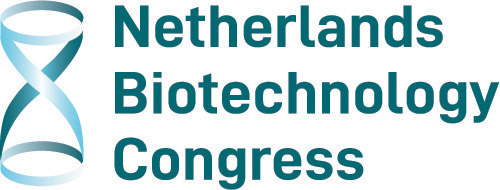Oxygen balanced mixotrophic cultivation: how to double microalgae productivity while avoiding gas transfer
Fabian Abiusi [1], Marcel Janssen [1], Rene H. Wijffels [1]
[1] Bioprocess Engineering, Wageningen University& Research
Abstract
In the present study microalgae productivity was doubled by designing an innovative mixotrophic cultivation strategy that does not require gas-liquid transfer of oxygen or carbon dioxide. Chlorella sorokiniana SAG 211/8K was cultivated under continuous operation in a 2 L stirred-tank-photobioreactor re-designed such that respiratory oxygen consumption was controlled by tuning the acetic acid supply.
In this mixotrophic set-up, the reactor was first operated with aeration and no net oxygen production was measured at a fix acetic acid supply rate. Then the aeration was stopped and the acetic acid supply rate was automatically regulated to maintain a constant dissolved oxygen level using a process control software. Using this set-up, respiratory oxygen consumption was exactly balanced by phototrophic oxygen production and the reactor was operated without any gas-liquid exchange. The carbon dioxide required for photosynthesis was completely covered by the aerobic conversion of acetic acid. Under this condition biomass/substrate yield was 0.93 C-molx·C-molS-1. Under chemostat conditions both reactor productivity and algal biomass concentration were doubled in comparison to a photoautotrophic reference culture.
Our results demonstrate that photoautotrophic and chemoorganotrophic metabolism operate concurrently and that the overall yield is the sum of the two metabolic modes. At the expense of supplying an organic carbon source, cultivation of microalgae in photobioreactors can be improved by preventing energy intensive aeration, efficiently providing the CO2 needed for the photosynthesis, while simultaneously doubling reactor productivity and biomass concentration.
This study aimed to decrease microalgal production cost by designing an innovative mixotrophic cultivation strategy that does not require gas-liquid transfer of oxygen or carbon dioxide. During mixotrophic cultivation, light and organic carbons are simultaneously exploited and both chemoorganotrophic and photoautotrophic metabolism operate concurrently within a single microalgal monoculture. Thus, the oxygen required by aerobic chemoorganotrophic growth can be completely covered by oxygenic photosynthesis, and no active gassing of the culture is required. Vice versa, the carbon dioxide needed to carry on photosynthesis, can be provided by the chemoorganotrophic metabolism.
In this work, Chlorella Sorokiniana SAG 211/8K was cultivated under continuous operation, in a 2 L stirred-tank-photobioreactor, re-designed such that the net oxygen production was controlled by tuning the acetic acid supply. Using this set-up, an oxygen balance was achieved allowing the reactor to run without gas exchange. Under this condition biomass/carbon yield was 0.98 gC-biomass/gC-acetic acid and biomass productivity and concentration were doubled. Mixotrophic cultivation did not affect the photosystem II maximum quantum yield (Fv/Fm), the absorption cross section of the microalgal cells, and the algal cell size. Only the ratio between chlorophylls and carotenoids increased by 10%. Our results suggest that photoautotrophic and chemoorganotrophic metabolism operate concurrently and that the overall yield is the sum of the two metabolic modes.
These results show that a waste product, e.g., acetic acid from dark fermentation, can be used as a substrate for microalgae production to eliminate the aeration energy demand while simultaneously increasing biomass production.
Keywords: Mixotrophic cultivation, biomass productivity, gas exchange, yields.

